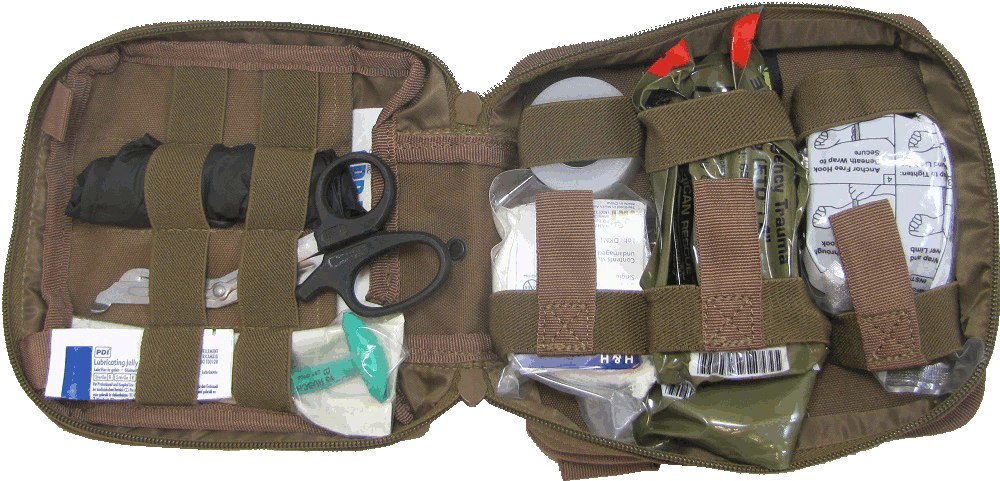My disagreement with this report is more on the reasons behind rather than the method of the training. I believe in self care first, then buddy aid, then medics (EMTs), and then the hospitals. Prepping needs to hit all of these levels in regards to supplies and training. If the conclusion of the report is that tourniquets are not useful in an active shooter situation, then I think civilian medical training might have lost the reason the military emphasizes the tourniquet in its training.
This report states the current medical training emphasis on hemorrhage control for civilians is over-rated in the case of an active shooter scenario based on the injuries received from several documented examples. While I do agree with this report in as much as the types of wounds we are expecting for this type of scenario should be reevaluated, I disagree with the conclusion that the emphasis in training to stop blood loss from extremity wounds is over-rated. Current shooting situations, especially with active shooters, dictate certain shot pattern results. An unarmed populace (an active shooters’ preferred target) generally does not hide and or fight back very well. They are surprised to find themselves in this situation and tend to react poorly. This report does not address that most of the targets were either standing out in plain sight, stationary, or shot from close range where the shooter would be hard-pressed to miss center of mass and/or head shots.
An active shooter scenario also has a different shooting dynamic than combat. On the battlefield, you verify that it is indeed the enemy before you shoot, but once his/her location and general description is acquired, any movement in that vicinity is considered a valid target and shot. In combat, you do not always see a full profile in your sights. You may see a leg, an arm, the top of a head but not always the whole person. Clearing rooms, buildings, and streets where targets are jumping out, firing blindly, or aimed from around corners or barricades and in windows or from rooftops does not lend itself to shooting at the center mass of a human, another reason for the arm and leg wound patterns typical in combat shootings.
The actual emphasis in the military is self care. Tourniquets are taught as a form of quick and temporary self-medical care until wounds can be further evaluated under better medical treatment than what is available at the time of receiving the wound. The emphasis is self care. You can give yourself a tourniquet until the shooting stops and either continue to fight or keep your blood inside of you until someone with better knowledge, ability, and resources can help with that. Soldiers, Sailors, Airmen, and Marines do not place a tourniquet on everything. We know to apply pressure bandages on holes in the torso, how to check for and deal with fractures, look for exit wounds, and pack in bandages. But we also know that to apply that knowledge to yourself is hard. Do what you can for yourself.
Neither does this report address the total lack of body armor worn by civilians in active shooting scenarios, nor the tactical mindset of military training in such a scenario. Generally speaking, there are few instances where an individual, geared and prepared for combat, as they ostensibly are in a combat zone, would find themselves dealing with the situation of an active shooter scenario without access to tactics, training, and material that would mitigate the types of wounds received in a civilian active shooter scenario.
Finally we come to something the report completely fails to address: availability of medical supplies. The tourniquets mentioned in the report are not described as being purpose-made or improvised. Every military member in a combat zone has on them their own medical kit (Individual First Aid Kit or IFAK). Included are, at minimum: scissors, gauze, tape, tourniquet, pressure bandages, and painkillers. If current civil training is emphasized, the civilian care recommended in the report seems to recommend lots of trained individuals. In an active shooter scenario on the civilian populace, what kind of first aid kit do most people have, if any? Most schools have a minor medical kit and supplies dealing with band aids more than pressure bandages. What is required of a first aid kit in a movie theater or night club? How many people have a belt? It may be that people are using what they have and doing what they can.
If this report finds that civilian-based immediate care places too much emphasis on this specific treatment with substandard results, (against what standard are they substandard?), maybe civilian-based training needs to rethink why the military teaches this method of self care. – S.W.










